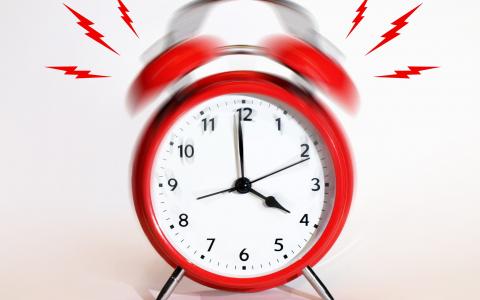
(TheStreet) - The past 24 hours were a bit calmer, but a crisis of confidence is still shaking the banks.
Investors are trying to catch their breath as they await the Federal Reserve's monetary-policy decision.
The Fed faces its toughest choice since it began raising interest rates in the second half of 2021 to fight rising prices, currently at record highs.
Don't Miss: Fed's Powell Must Balance Inflation Fight, Bank Stability
But what complicates the equation now is the March 10 outbreak of a banking crisis caused by the sudden collapse of Silicon Valley Bank.
The irony is that SVB failed because the bank did not protect itself from the risk of a reversal in market conditions linked to the upward move in interest rates. SVB had acquired Treasury bonds when interest rates were low.
These assets are among the highest quality because the risk that the borrower -- the U.S. government -- defaults is almost nonexistent.
The problem is that the bank had not anticipated that interest rates would rise. When the Fed began boosting rates to fight inflation, the bank's bond portfolio lost value. Bond prices and interest rates move inversely to each other.
The price slump caused the bank a $1.8 billion loss when it sold some of them to meet customers' withdrawal requests. Those customers had suddenly found borrowing difficult because loans had become expensive when interest rates rose.
Comerica and U.S. Bancorp: Burry's Focus
SVB (SIVB) - Get Free Report then wanted to raise $2.25 billion in capital. This announcement caused a run on the bank, forcing regulators to shut down the company on March 10. Since then investors and depositors have feared that SVB's issues might spread to other regional banks with similar profiles. (The industry term is "contagion.")
The emergency measures regulators have announced have so far failed to restore calm.
It is in this context that the Fed will announce on March 22 its choice between fighting inflation by further increasing interest rates and easing fears of a conflagration in the financial system.
Economists and analysts are divided.
"Don't just do something: sit there," said the Nobel Prize winner in economics Paul Krugman. "The banking mess is, as far as I can tell, sufficient reason for the Fed to pause until we know more."
Larry Summers, the star Harvard professor, says the Fed should raise rates despite the problems within the banks.
"I believe it’s appropriate — at least on current facts — to raise interest rates by 25 basis points," [0.25 percentage point] Summers said.
If in recent days, observers had focused on First Republic Bank (FRC) - Get Free Report, the prominent investor Michael Burry is sounding the alert on two other banks: Comerica (CMA) - Get Free Report and U.S. Bancorp.
In a chart, the legendary investor names what he considers the banks most vulnerable to a bank run. These are also among the firms with the most unrealized losses in their portfolios of Treasury bonds and municipal bonds.
It appears from the chart/guide, as Burry called it, that Silicon Valley Bank and Signature Bank in New York -- two banks closed by regulators -- were the institutions that had the most uninsured deposits. That means customers holding more than the FDIC insurance limit $250,000 in their accounts.
First Republic is the No. 3 bank most dependent on wealthy customers. Next come Comerica and U.S. Bancorp; more than 60% their depositors are uninsured, according to Burry.
The investor is dubbed 'Big Short' by Wall Street because he became a legend after he successfully bet against the subprime mortgages that caused the 2008 financial crisis.
Moody's Warns on Comerica; US Bancorp Weighs In
At the same time, Comerica's unrealized losses represent 40% of its common equity tier 1 capital, which is a bank's highest-quality capital because it is fully available to cover losses.
This percentage is even higher at U.S. Bancorp: Unrealized losses represent almost 60% of this tier 1 capital. The unrealized losses represent 40% of First Republic Bank's tier 1 capital but about 80% of the bank's customers are uninsured.
For comparison, unrealized losses constituted between 30% and 40% of common equity tier 1 capital for Signature Bank and 120% for SVB.
"This is a good chart/guide," Burry posted on Twitter on March 17.
Three days later he added: "Hope that chart helped."
As usual as with Burry, the tweets have been deleted.
By Luc Olinga



